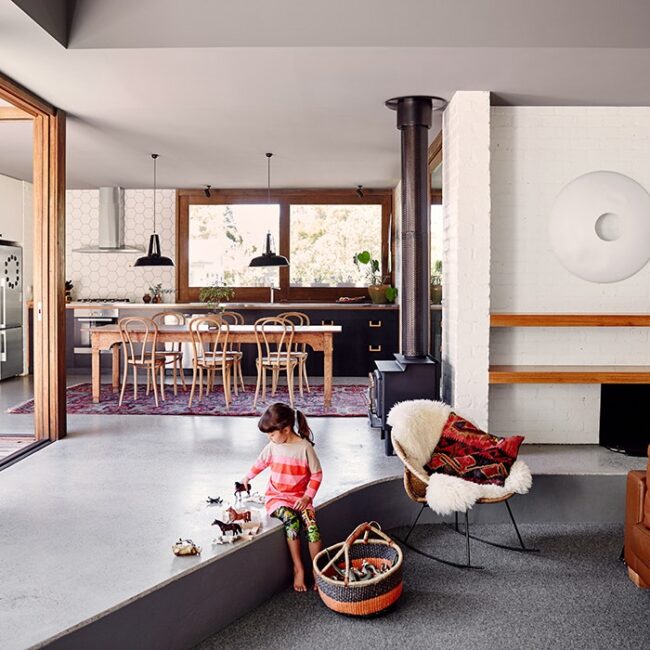
Hardwood floors are a timeless choice for many homes. They’re durable, easy to clean, and add a sense of warmth and style that’s hard to match. But when a baby starts crawling or a toddler begins walking, those sleek wood surfaces can suddenly feel like a minefield of slips, bumps, and bruises.
The good news? You don’t have to give up your beautiful flooring to create a safer space for your child. With a few thoughtful changes and a better understanding of how hardwood behaves, you can turn your home into a place where your child can explore freely and safely.
Understanding the Risks of Bare Wood Floors
Hardwood is naturally smooth, which is part of its appeal. But that same smoothness can also become a slipping hazard, especially for little ones still learning balance. Add socks or footed pajamas into the mix, and you have a recipe for frequent tumbles.
There’s also the hardness factor. Unlike carpet, wood doesn’t offer any cushion when a child falls. Even minor trips can result in scrapes or bruises if the flooring is completely bare.
Beyond falls, sharp edges from furniture resting directly on the floor or splinters from worn-out boards can also pose risks. That’s why child-proofing a hardwood floor isn’t just about what’s underfoot—it’s about everything around it.
Rugs Are Your Best Friend (With a Few Conditions)
One of the easiest ways to soften hardwood floors and reduce slipping is to use area rugs. They provide traction, padding, and warmth. But not all rugs are created equal when it comes to child safety.
Choose rugs with a low pile and avoid shag styles that toddlers can trip over. Just as important, make sure they don’t slide. Use high-quality non-slip pads underneath to anchor them in place. Some parents also opt for interlocking foam mats in play areas—they’re easy to clean and come in a range of colors and patterns to match your style.
Try to avoid using double-sided tape or low-quality rug pads that may leave residue on the floor or damage the finish over time. You want something that’s secure, but also safe for the hardwood underneath.
Don’t Skip the Floor Finish Details
When you’re trying to make a home more child-friendly, the type of floor finish matters more than you might think. High-gloss finishes look stunning, but they tend to be more slippery, especially when the surface is freshly cleaned.
A matte or satin finish offers more grip and helps camouflage small scratches and smudges—something you’ll appreciate when toys start flying. If your floor is due for refinishing anyway, consider requesting a slip-resistant coating or sealant designed for homes with children or elderly residents.
It’s also worth noting that some finishes release volatile organic compounds (VOCs), which can linger in the air. If you’re planning any updates, look for floor products that are low-VOC and certified safe by organizations like GREENGUARD or EUROFINS.
Toe Stubs and Trip Hazards: Mind the Transitions
The seams between rooms or between hardwood and tile can create little ledges that go unnoticed by adults but quickly become obstacles for toddlers. These transition areas often cause stubbed toes or tripping accidents.
To minimize the risk, install flush thresholds or low-profile transition strips. If the floor levels differ significantly between rooms, consider gentle slopes or ramps that ease the change in height.
At the same time, take a walk around your home and look for uneven boards or nails that might be sticking up. These small flaws are easy to overlook until your child’s tiny foot finds them.
Furniture Safety Starts at the Floor
Another aspect of child-proofing your hardwood involves what’s sitting on it. Heavy furniture can shift or slide easily on smooth floors, posing a major hazard if a child tries to pull up on it or lean against it.
Add felt pads or non-slip grips to furniture legs to stabilize them. Even better, anchor dressers, bookshelves, and TV stands to the wall using safety brackets or anti-tip kits. The floor might be your focus, but what’s above it matters just as much for keeping your child out of harm’s way.
Cleaning With Caution
It’s natural to want clean floors, especially when your child spends most of their time crawling or playing on them. But the products you use can either help or hurt the situation.
Some hardwood floor cleaners leave a residue that actually makes the floor more slippery. Others may contain harsh chemicals that linger on the surface long after you’ve finished mopping.
Stick to water-based, non-toxic cleaners that are made specifically for hardwood. If you’re unsure, look for products certified safe for children and pets. And always let the floor dry completely before letting your little one loose again.
As They Grow, So Will Their Confidence
The toddler years go by quickly, but that doesn’t mean you should leave safety to chance. With a few changes—many of them simple—you can make your hardwood floors much safer without compromising style.
Eventually, your child will get better at navigating the world on their own two feet. And when they do, you’ll be glad you created an environment where they could fall a little, learn a lot, and always land somewhere safe.
Conclusion
Child-proofing your hardwood floors isn’t about making your home perfect—it’s about creating a space where your little one can grow, explore, and play with fewer risks. From choosing the right rugs to using safer finishes and anchoring your furniture, each step adds a layer of protection that helps you breathe easier as a parent.
You don’t have to sacrifice style or tear out your beautiful wood floors. With a few smart adjustments and ongoing attention, your home can be both elegant and safe—a place where your child feels free to take their first steps and beyond.
